Our Isuzu NPS has aftermarket single wheels with alloy rims and Toyo tyres, supplied new from All Terrain Warriors. After 65,000km, how are they holding up? We answer some of the questions you’ve been asking about these tyres.
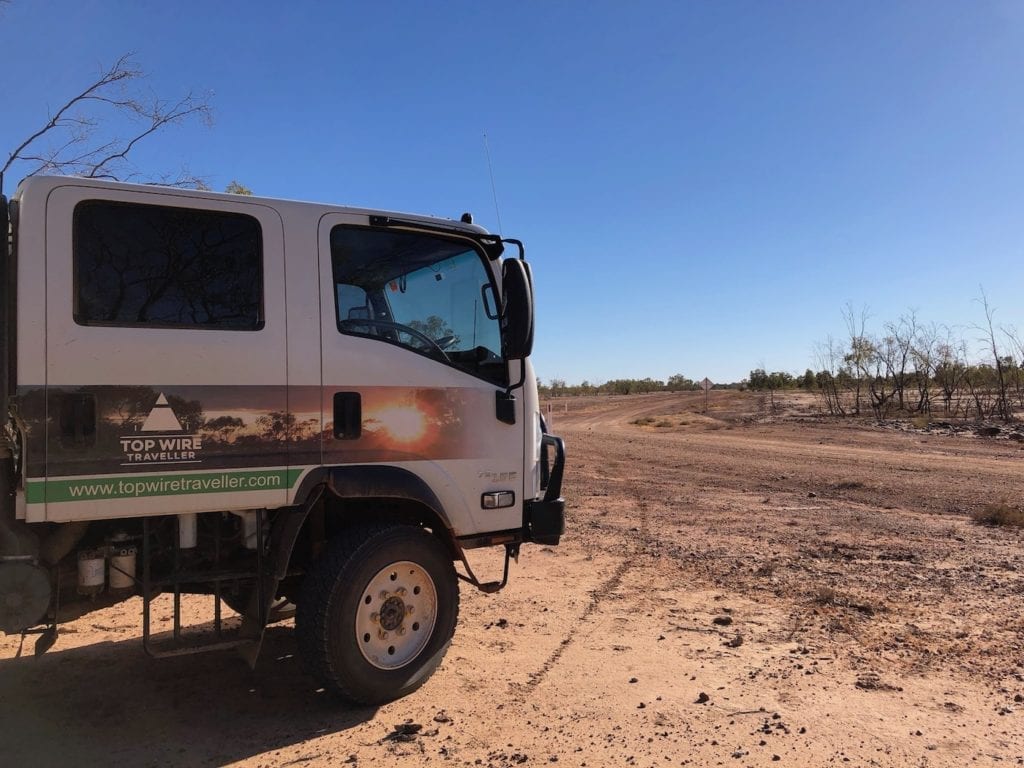
What Tyres Are You Running?
We’re running Toyo tyres, M608Z truck tyres. They are 285/70/19.5, a heavy truck tyre with a full steel casing. These tyres are designed for heavy trucks, as drive tyres and off-road steer tyres.
Each tyre has a 2,900kg load rating, so they’re well under-rated on a light truck with a GVM of 7,500kg.
Update: As of 2022, unfortunately Toyo has stopped importing truck tyres. So the tyres described here are no longer available in Australia. We are currently trialling a set of Founders 305/70R19.5 mud tyres.
What does this mean in practice? Well, the stiff sidewalls don’t bag out much when you reduce tyre pressure for off-road driving. Rather, the tread pattern flattens out and forms a longer contact area with the ground.
The biggest plus however is the super-strong sidewalls.
We recently dropped down over some really ugly rock steps, with large sharp rocks lying around for good measure. I glanced in the passenger mirror just as the rear tyre sidewall was being jammed hard against a sharp rock the size of a football. It was digging into the sidewall and I fully expected a destroyed tyre.
However, the sidewall was fine. No sign of even a nick or a scratch. These tyres really are tough.
What Tyre Pressures Do You Run?
We talk about tyre pressure in detail here. However in summary:
- On bitumen we were running 85psi rear and 75psi front (see below).
- On dirt roads or off-road conditions we were running 55-60 front and rear (see below).
These pressures (cold pressures) are a compromise between ride quality and heat build-up.
Of course, what you run will be dependent on what weights you are carrying.
Talking To The Experts
It’s all well and good to experiment with tyre pressures. However, it was time to speak to the experts at Toyo Tyres Australia. Actually they contacted me first, after reading my comments about their tyres in this Review of our Isuzu NPS after 2 years’ faithful service.
Steve Burke is the Technical Manager at Toyo Tyres Australia. His first question was, what weights are we running? Time for a visit to a weigh bridge. The results:
- Steer = 2.78T
- Drive = 3.80T
- Total = 6.58T
Based on these weights, Steve recommended:
- On bitumen, run 85psi rear and 65psi front (we were running 85R/75F).
- For general off-road use, run 70psi rear and 50 front (we were running 60R/60F).
These are cold pressures.
Update: We have reduced rear tyre pressure to 60psi (cold), as the ride was too rough at 70psi.
We’ve now dropped both front and rear pressures again. The ride is infinitely better on rougher roads. The tyres don’t seem to get any hotter either. So the new figures are:
– For general off-road use, we run 55psi rear and 45psi front.
Steve’s most important piece of advice was to contact your tyre manufacturer for expert inflation advice. They are the people who have the knowledge and experience. They recognise tyres are an expensive wear item and want people to get maximum life from their tyres.
Let’s move onto the wear patterns we’re seeing on our tyres.
Any Strange Wear Patterns?
First we’ll talk about tyre rotation.
All Terrain Warriors supplied the alloy rims. They’re dished on one side and virtually flat on the other. By installing the rear wheels with the dish facing out and the front wheels with the dish facing in, you get the same wheeltrack front and rear. This is great for sand or mud driving, as the rear wheels follow the front wheel tracks.
ATW also specified that when rotating the tyres, keep them on the same side. We have 2 spares, so we rotate three tyres on the left and three on the right.
The tyres rotate as follows. Rear goes to the spare, spare goes to the front and front goes to the rear.
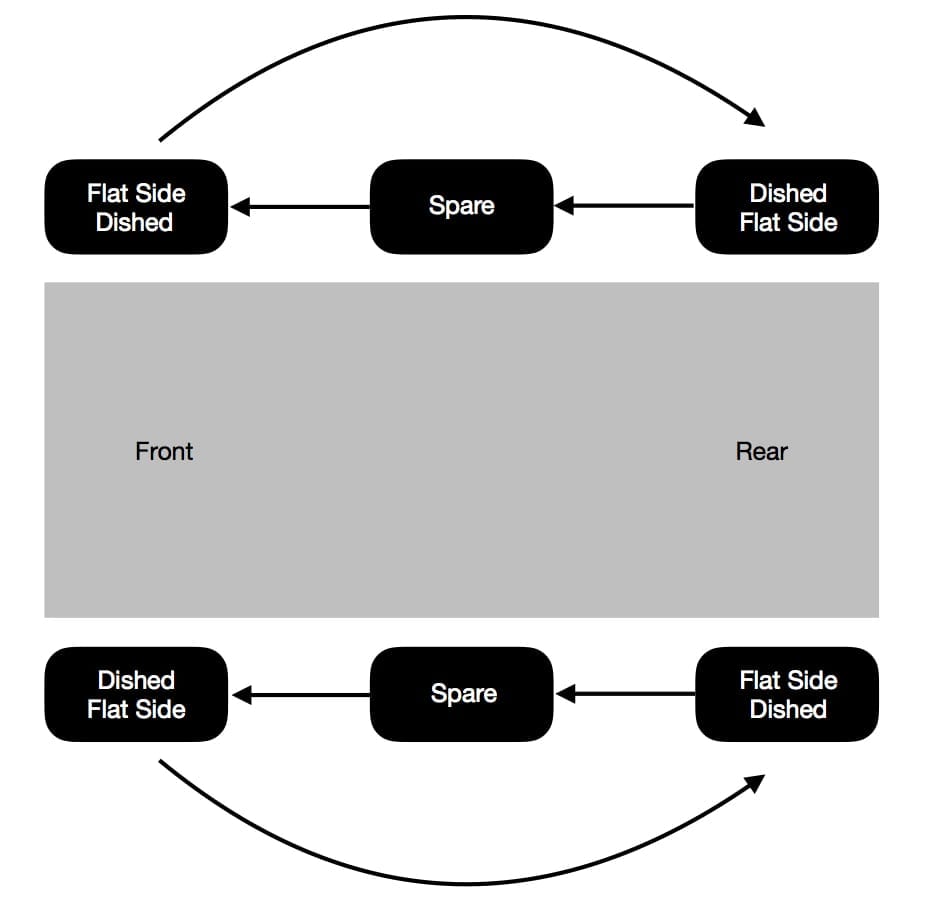
Remember, the tyres are dished. So when they move from rear to front and vice-versa, their direction of rotation changes. This also helps to even out wear.
ATW also recommended rotating them every 10,000km, which we did… for a while. We rotated them at 10,000, 20,000, 30,000 then a huge gap to 55,000km.
The tyres are now at 67,000km and slightly overdue for rotation.
So what happens at each wheel? Well, the left side tends to feather the outer lugs front and rear. The right side tyres wear pretty evenly, with a slight tendency to feather the inner lugs just a little.
Both rear tyres feather quite a bit more than the front tyres.
What’s feathering? When you see tread blocks next to each other that aren’t the same height, that’s feathering. In other words, front and rear tread block heights are different.
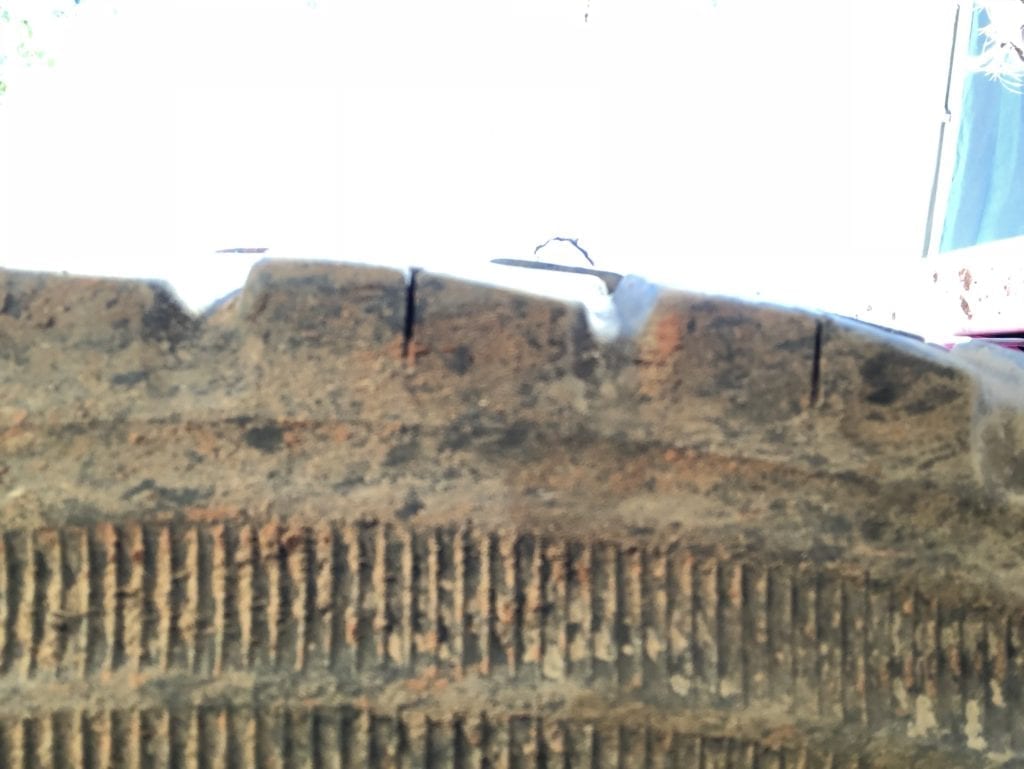
This is totally expected with Australia’s huge road cambers. With the truck always leaning to the left, of course most of the load is going to be on the left of each tyre.
The problem with rotating the tyres only down one side of the truck is that the left side tyres take more of the weight. So we’re seeing the left set wear more quickly than the right set.
With the next set of tyres, we’re going to try a slightly different tyre rotation. See below.
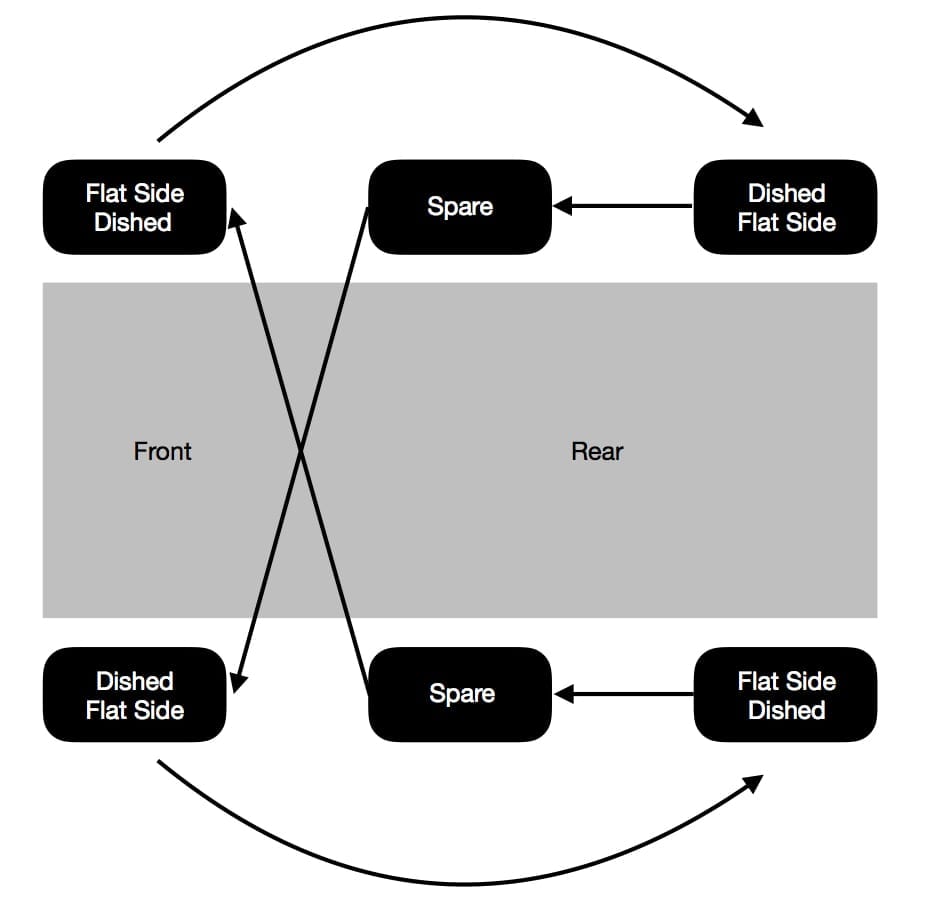
With this rotation sequence, the tyres will be swapping sides. This should reduce the feathering that originates on the left side of the truck. We’ll wait and see, and let you know the results.
On final word on tyre wear. After travelling on rocky dirt roads, the tread on the rear tyres looks a bit like they’ve been chewed by a dog. They have nicks and small cuts all over them. And you’ll see tiny cracks between the lugs.
We’re really not concerned by this. While it might not look too good, it’s hardly surprising. The rear tyres are working hard in these conditions. Not only are they carrying the weight, they also have to accelerate the truck and slow it down when the exhaust brake’s in use.
Any tyre that’s skipping and bouncing over corrugations and rocks will see damage on the tread face.
Some people use high range 4WD off the bitumen to take the load off the rear tyres. Personally I don’t, unless the road is particularly steep. The results from drivetrain wind-up on hard surfaces aren’t pretty.
I would rather compromise tyre life than be faced with a huge bill for a new diff centre, transfer case or broken axle.
What The Experts Say About Feathering
Quoting Steve Burke from Toyo Tyres Australia, “On the topic of feathering, that’s unfortunately a (consequence) of running aggressive drive tyres in the steer position on sealed roads. …considering the requirements of your application, regular rotations and a close eye on wheel alignment is about the best you can do”.
Makes sense to me.
How Long Do They Last?
It’s a bit hard to say, since we didn’t stick to the recommended 10,000km rotation schedule. And it turns out we haven’t been running Toyo’s recommended tyre pressures either. However, we have at least rotated all 6 tyres every time.
We figured out how many kilometres each tyre has actually done, and in which position.

What can we learn from this?
Given the current tyre wear, the tyres currently at the left rear and left spare positions are good for another 10,000km, absolute maximum. This equates to a tyre life of 65,000 and 55,000km respectively.
The left front is probably good for another 30,000km. So again it’s around the 60-65,000km mark.
There’s no doubt the right side tyres are in much better shape. Based on current wear, I’d expect them to last maybe 70,000km.
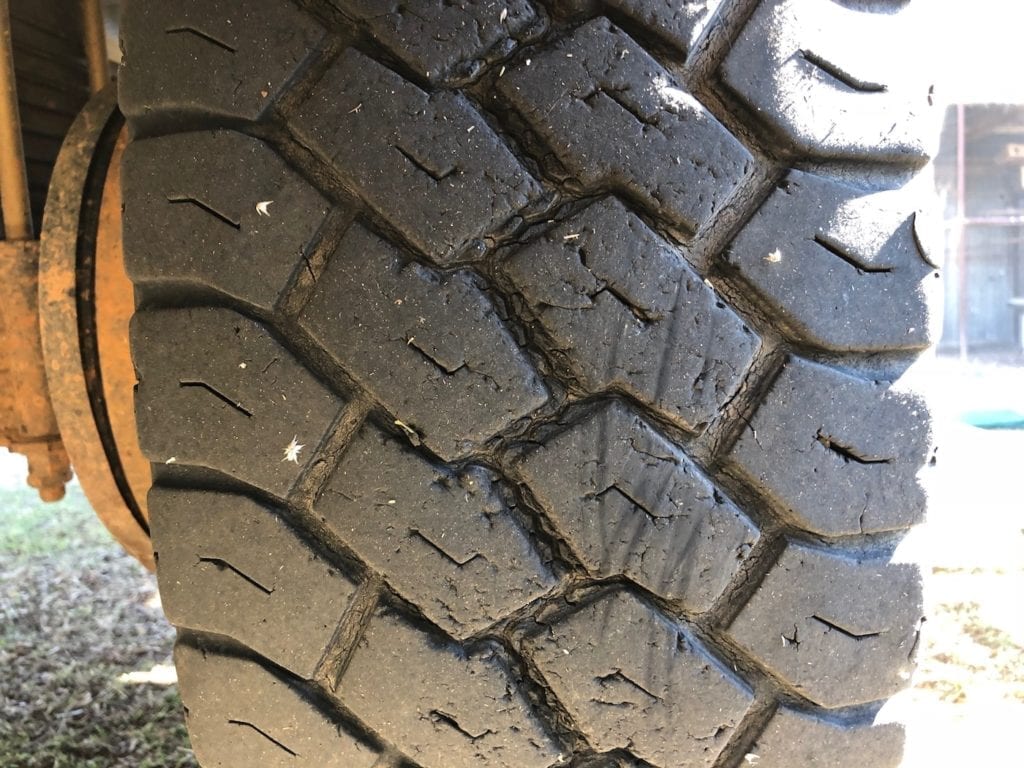
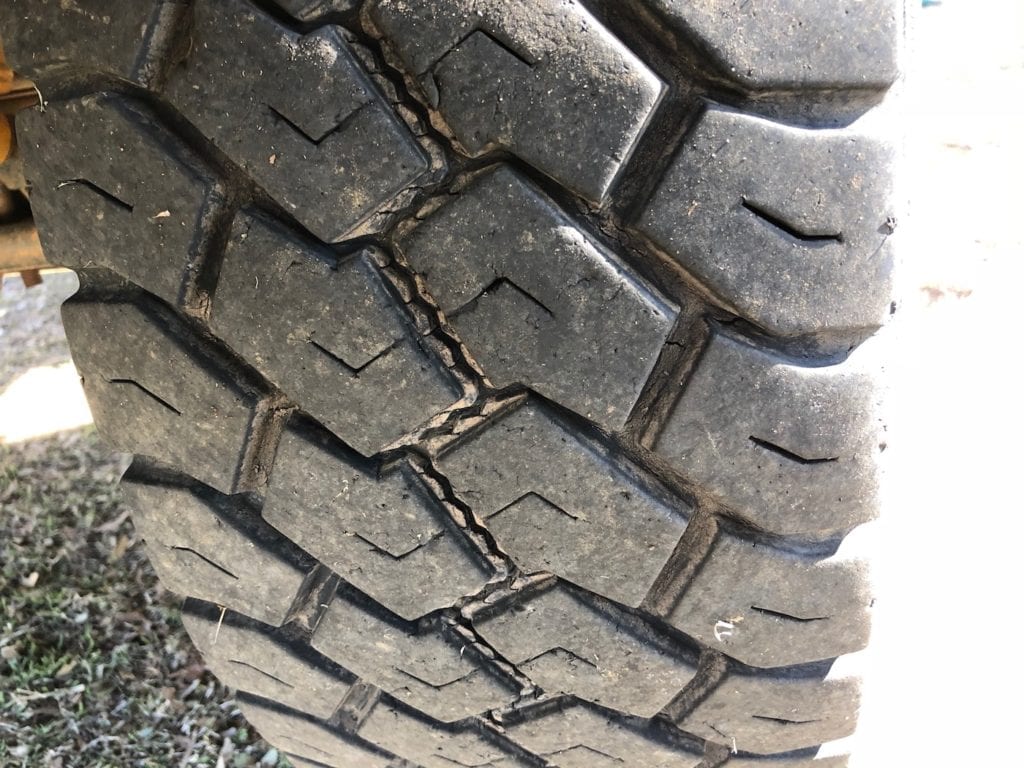
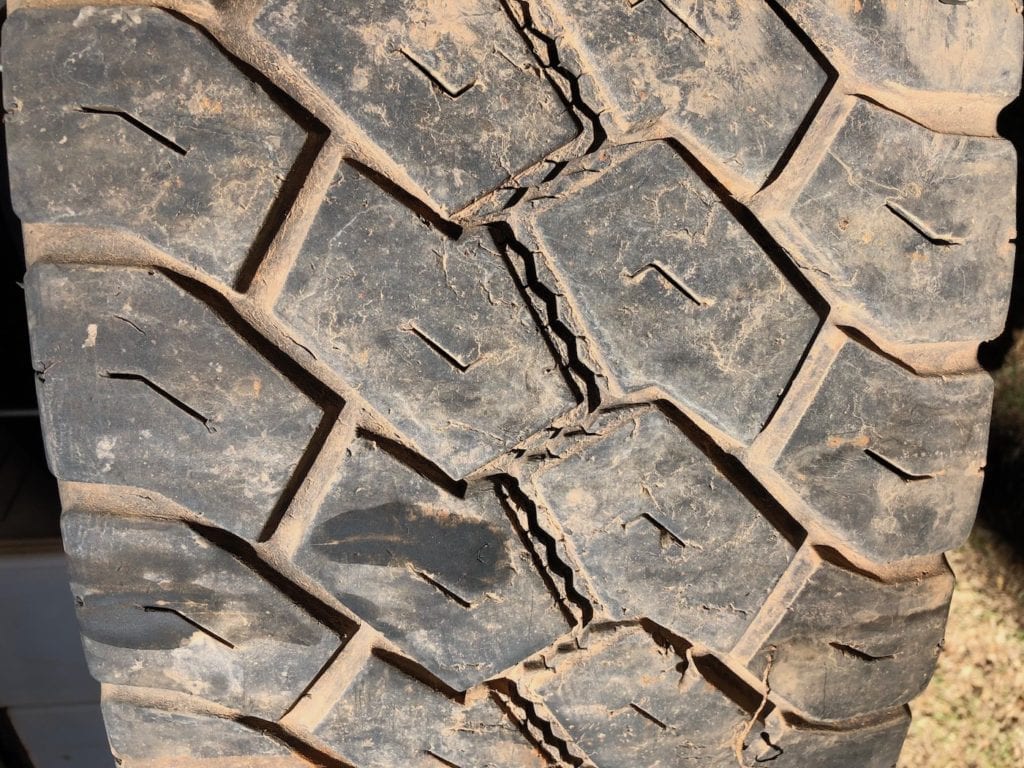
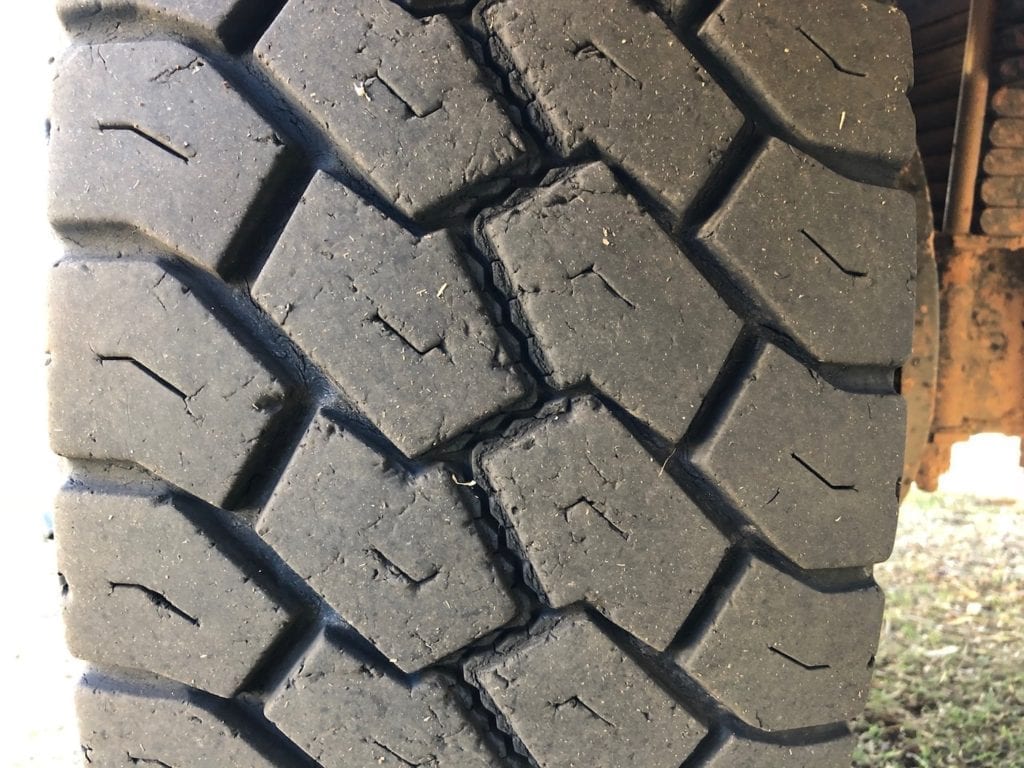
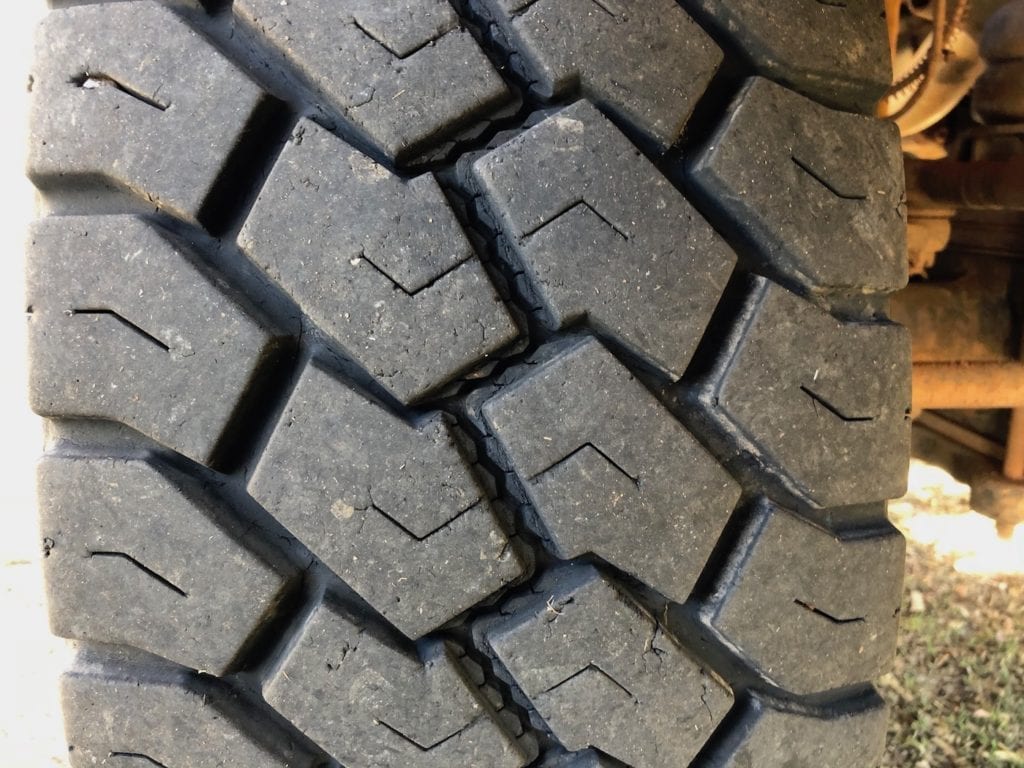
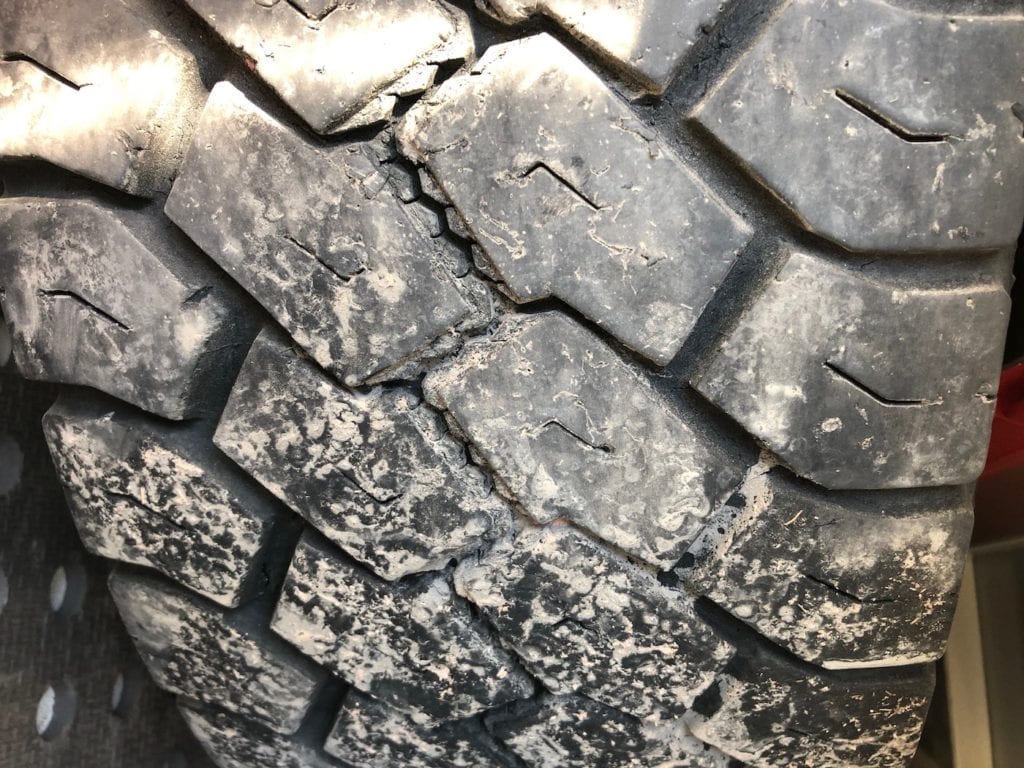
And this reinforces why I want to change the tyre rotation pattern. The left side chews tyres more than the right side. And both rear positions chew tyres pretty badly. So they need to swap sides regularly.
And in case you’re wondering, yes we do check tyre pressures regularly!
Any Problems?
None. These tyres are brilliant. They’re reasonably quite, sure-footed in all conditions and incredibly tough.
Yes, the tread pattern gets roughed up on rocky roads. However, it’s just surface damage. They don’t lose huge chunks from the lugs. It seems Toyo have the compound just right for Australian conditions.
Having said this, the surface damage will of course accelerate tyre wear.
In Summary
To be honest, when we first bought these tyres I expected 80-90,000km from a set of these tyres. But after talking to the Steve at Toyo Tyres Australia, I now understand why they have worn the way they have.
We’ve really given these tyres a workout. They ran on bitumen for 99% of their first 50,000km, which feathers the steer tyres. Then we’ve been running the steer tyres too high on both dirt and bitumen and the drive tyres too low on dirt roads. To top it off, they’ve been smashed over some of Australia’s worst roads while carrying heavy loads. And I also didn’t keep up with tyre rotations. So we haven’t exactly made their lives easy…
With all this in mind, I wouldn’t hesitate to buy another set.
I would rather put up with a shorter tyre life and know these tyres are tough enough to handle anything… a far better outcome than damaging the sidewalls.
For various reasons which I won’t go into here, we have replaced the rear and spare tyres with new ones. The front tyres have moved to the spare positions.
It will be interesting to see what effect my new tyre rotation scheme combined with Toyo’s recommended tyre pressures has on tyre wear. I’ll keep you posted.
If you only take away one thing from this article, it should be this. Contact your tyre manufacturer for expert inflation advice.

Get your Traveller’s Guides
… and a whole lot more at our FREE RESOURCES Page!
Any questions or comments? Go to the Comments below or join us on Pinterest, Facebook or YouTube.
Any errors or omissions are mine alone.
NOTE: We are not affiliated with All Terrain Warriors or Toyo Tyres Australia. Thanks to Steve Burke from Toyo Tyres Australia for his help. (All of our reviews are honest, we tell it how it is).
Go here for more Reviews on our 4×4 Isuzu NPS truck.

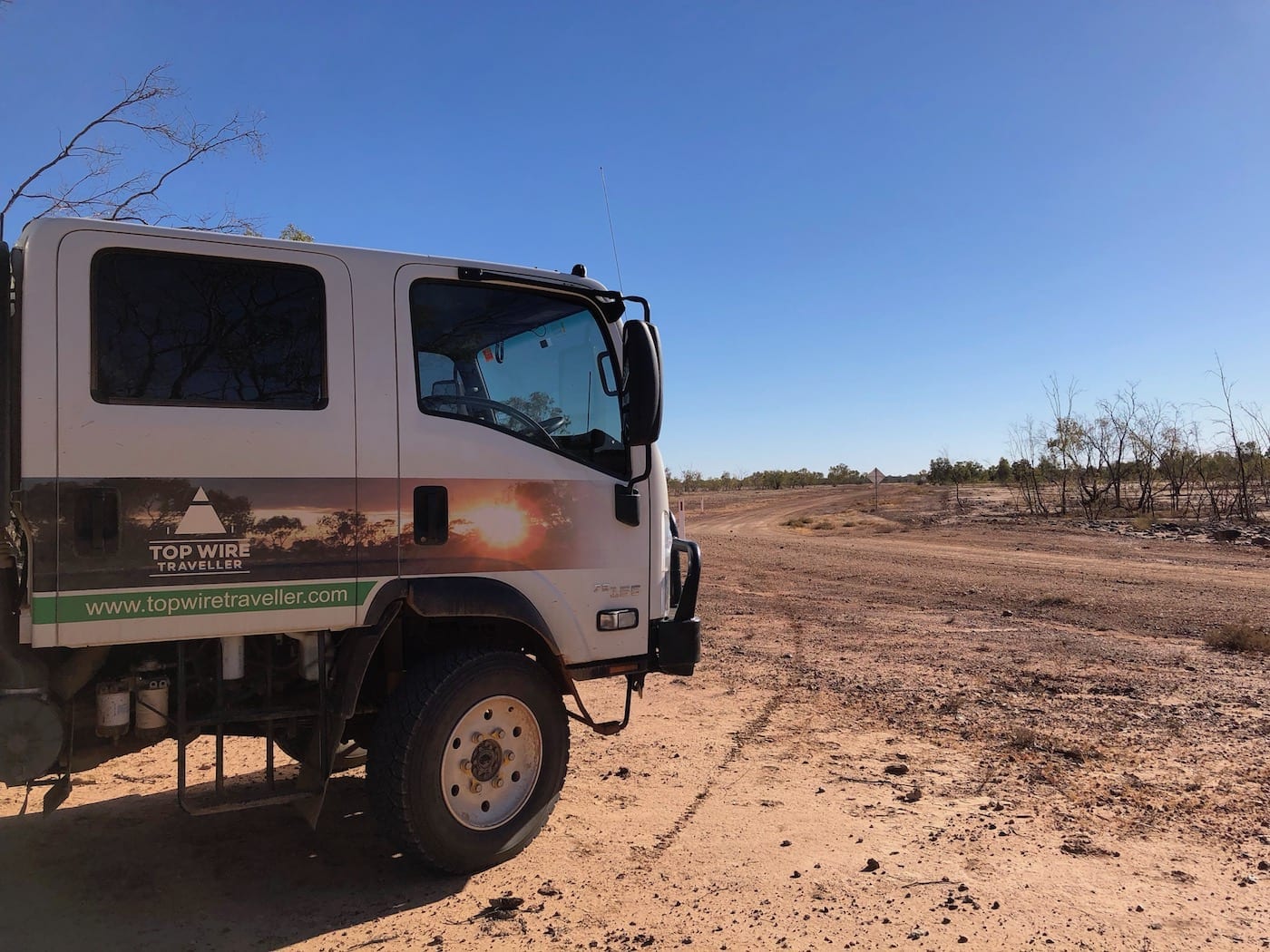
Hi I have always not used the spares in rotation but saved them and then only had only had to buy 2 for replacement with the best 2 old ones becoming spares.This has always made sense to me but I would like to hear your view.cheers steve.
Hi Steve,
I’m leaning towards doing the same as you. We’re now buying 2 new tyres at a time as well. I suppose the choice of whether you use the spares in a tyre rotation depends on how much tread they have left and whether they have any minor damage.
Cheers, Andrew
Hi,
Have you try to buy these Toyo M608 tyres recently?
I just received an email form Steve Burke at Toyo stating there is zero stock of this tyre and no availability date?
What are the alternative options?
Thanks
Andrew H
Hi Andrew,
Yes I’ve heard they’re difficult to find at present. Worldwide supply chains have been badly disrupted by the pandemic.
I would call all the truck builders first (All Terrain Warriors, etc) to see if they have any. Then start calling the truck tyre centres. It seems like there are some in Australia… it’s just a matter of tracking them down.
Cheers, Andrew